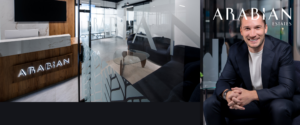A prospective buyer decides whether to trust you well before the paperwork lands on the table. Behavioural science studies suggest most people form a lasting judgement in under seven seconds. In real estate, where stakes are high and attention spans short, the window can be even shorter. Your first impression must communicate competence, cultural fluency and genuine interest – especially in Dubai’s multicultural market.
This first instalment of our two part Property Finder guide on first impressions focuses on the face-to-face elements you control: active listening, body language, and attire that respects both climate and custom. Nail these foundations and you earn the right to keep the conversation—and the deal—moving forward. Once you’ve read through Part 1, head over to Part 2 on Digital Presence and Follow-Through to discover tips and tricks for improving your digital presence and follow through. The tips in this series will help you build a solid foundation for your future customer relationships.

Show You’re Listening Before You Speak
First contact is rarely about floor plans or finance – it’s a test of intent. A prospective buyer, tenant, or landlord wants an answer to one question: Do I trust that this agent genuinely understands me?
The proof is delivered not in statistics but in the quality of your attention. The quickest route to demonstrating attention is active listening. Below are three listening tactics that translate empathy into measurable deal momentum.
| Action | What It Sounds Like | Why It Works |
|---|---|---|
| Open-ended discovery | “What prompted your move from Riyadh to Dubai this year?” | Invites a narrative—schools, Golden Visa, yield targets—rather than one-word answers. |
| Paraphrase & confirm | “So a villa near Dubai College with easy access to the Marina would meet both family and work needs—have I understood that correctly?” | Demonstrates respect and prevents costly mis-specification. |
| Strategic silence | Count “one-one-thousand, two-one-thousand” after the client pauses. | The brief hush feels like permission to elaborate on budget ceilings, timelines or hidden concerns. |
Pro tip: Before you mention square footage, aim to uncover three unspoken priorities—typically timeline, financing confidence, and lifestyle goals. Note them in your Client Relationship Management database (CRM) [hyperlink to CRM article] while the conversation is fresh. When you circle back with tailored options, your client sees tangible evidence that their story was heard—and that their trust in you was well placed.
Want more tips on how to have productive, trust-building conversations that get you to a close? Read Property Finder’s article “Top Real Estate Agents Ask These Key Questions to Uncover Their Clients’ Residential Needs” [hyperlink]”
Non-Verbal Credibility: Posture, Pace & Greeting
We often “listen” with our eyes first. Long before a client weighs your market data or commission rate, they unconsciously assess your stance, handshake and vocal rhythm for clues about confidence and respect. In Dubai—where a single meeting might include a Canadian tech founder, a senior Gulf business leader, and a South-Asian investor—non-verbal cues act as a common language.
Mastering that language can be simpler than you think. Here are a few tips that tend to translate well across cultures.
| Signal | How to Deploy It | What Clients Read |
|---|---|---|
| Posture | Stand (or sit) with feet shoulder-width, shoulders relaxed, arms uncrossed. When touring a property, avoid hands-in-pockets slouching; rest one hand lightly on a notebook or tablet instead. | Calm authority. You look like someone who can navigate a multi-million-dirham transaction without flinching. |
| Greeting Choice | Begin with a relaxed smile and assess the client’s lead. In the UAE the right hand is always used when shaking hands or exchanging business cards. When greeting a woman, wait for her to initiate; if she does not, place your right hand over your heart and offer a slight bow instead. If you sense any hesitation, default to the hand-over-heart gesture first. | Cultural fluency. You respect local norms and still project warmth and professionalism. |
| Vocal Pace & Tone | Mirror the client’s tempo and energy. A measured investor appreciates unhurried clarity; a young family may respond to a warmer, conversational rhythm. | Empathic alignment. Subconscious pacing builds rapport faster than scripted pleasantries. |
Quick calibration check: If your client leans forward, matches your eye contact and mirrors your hand gestures, you’re in sync. If they fold arms or shift weight away, maybe ease back your intensity and reestablish some space for them to set the tone. Feel free to pause and ask them a question or to clarify something. This tactic can help reengage and get them talking again.
Your body language is often interpreted faster—and remembered longer—than your words. In a high-trust industry, like real estate, proper body language helps ensure your client will feel comfortable enough to move forward with deeper questions about financing, neighbourhoods, or legal steps. When your non-verbal cues signal confidence, respect, and cultural awareness, you lower resistance and increase openness. In a place as globally diverse as Dubai, it can be the difference between a client politely listening and a client truly engaging.

Dress Codes: Polished, Practical & Culturally Aligned
Dubai rewards smart dressing, not flash. Clients may come from vastly different cultures, but nearly all of them notice when your appearance signals preparedness and respect. In a city where temperatures often exceed 40 °C and where business can happen in a marble-floored lobby or a construction site, your wardrobe needs to be both practical and appropriate. Arriving for a contract signing at the Dubai International Financial Centre (DIFC) in trainers or turning up to a midday site visit drenched in a wool suit doesn’t just look out of place, it signals you didn’t plan ahead. A few smart choices can help you look the part and stay focused on the deal.
| Element | What Works in Dubai | Why It Matters |
|---|---|---|
| Smart-casual core | Lightweight blazer, breathable cotton or linen shirt, chinos or ankle-length trousers; shoulders and knees discreetly covered | Marries professionalism with climate-savvy comfort; respects local expectations of modesty in formal settings |
| Neutral palette | Navy, charcoal, sand, cream; add texture—subtle herringbone or fine stripes—instead of loud prints | Photographs well for listings, keeps the spotlight on the property, minimises the visual clash across different cultural tastes |
| Footwear built for mileage | Polished leather loafers, brogues or low-heeled closed shoes with rubber grips | You’ll stride from marble lobby to beachfront balcony—no squeaks, slips or blister-induced distractions |
| Minimal accessories | Classic watch, slim belt, stud earrings or a single bracelet; pocket square for a dash of personality | Communicates attention to detail without overshadowing the conversation or appearing ostentatious |
| Desert-proof grooming | Hydrating lip balm, discreet fragrance, tidy nails, light mattifying powder for on-camera meetings | Keeps you camera-ready for sudden virtual calls and prevents the midday shine that undermines a composed image |
Field tip: Keep an “emergency kit” in your car—lint roller, stain pen, deodorant wipes and a spare shirt. Dubai’s humidity can undo even the best-pressed linen between Downtown and Dubai South.
Consistency Is Critical
Clients notice patterns, not one-off performances. If you look crisp at a 10 p.m. Zoom with a London hedge-fund buyer but appear rumpled at a 7 a.m. Palm Jumeirah viewing, you’ve introduced doubt. Establish a weekday uniform that travels seamlessly from climate-controlled signing rooms to sun-baked site inspections. Over time, that predictability becomes part of your professional signature—just like punctuality or prompt follow-ups.

Dressing for Digital First
Don’t assume your first in-person handshake is going to be your first meeting. Many first encounters now happen through a screen on a video chat. Test your outfit under artificial lighting: does the fabric glare? Does a bold colour bleed on webcam? Neutral tones and soft textures translate best, keeping your complexion even and your gestures clear. Remember: a video call at 9 p.m. GST with a European buyer is still a meeting— comfort is important, but maintaining a professional appearance is key—especially when there’s a chance you might need to turn on your camera or stand up to present a floor plan. A polished look helps preserve credibility in any client interaction.
Respecting Local Nuance
While Dubai is cosmopolitan, cultural respect remains paramount. Consider covering shoulders, chest and knees in business meetings, especially when dealing with government entities or Emirati families. Women often might opt for a tailored blazer over a blouse or smart tunic paired with wide-leg trousers or a midi skirt. Men can replace heavy ties with pocket squares for a touch of colour without heat-induced discomfort.
By treating wardrobe choices with the same strategic care you apply to market data, you send a clear message: you are prepared, culturally aware and dependable—an agent who can handle every detail between viewing and final signature.
Key Takeaways
In a city as fast-paced and culturally nuanced as Dubai, trust begins with how you show up. Make your first seven seconds count by signalling attentiveness, respect, and local awareness. Listen actively, pace your tone with intention, and meet etiquette with fluency—not performance. Then ensure your clothing works for the climate, the occasion, and the expectations of the client across from you.
Consistency is the real differentiator. A crisp appearance at every hour. A manner that adjusts, not performs. A presence that feels ready—without trying too hard.
These aren’t soft skills. In Dubai’s real estate market, they’re business fundamentals.
Want to learn how to carry that first impression into a lasting relationship? Read Part 2: Digital Presence and Follow-Through [hyperlink], where we cover WhatsApp touchpoints, listing strategy, leveraging Property Finder’s tools, and how to structure a follow-up cadence that keeps your name top of mind—until the deal is done.








